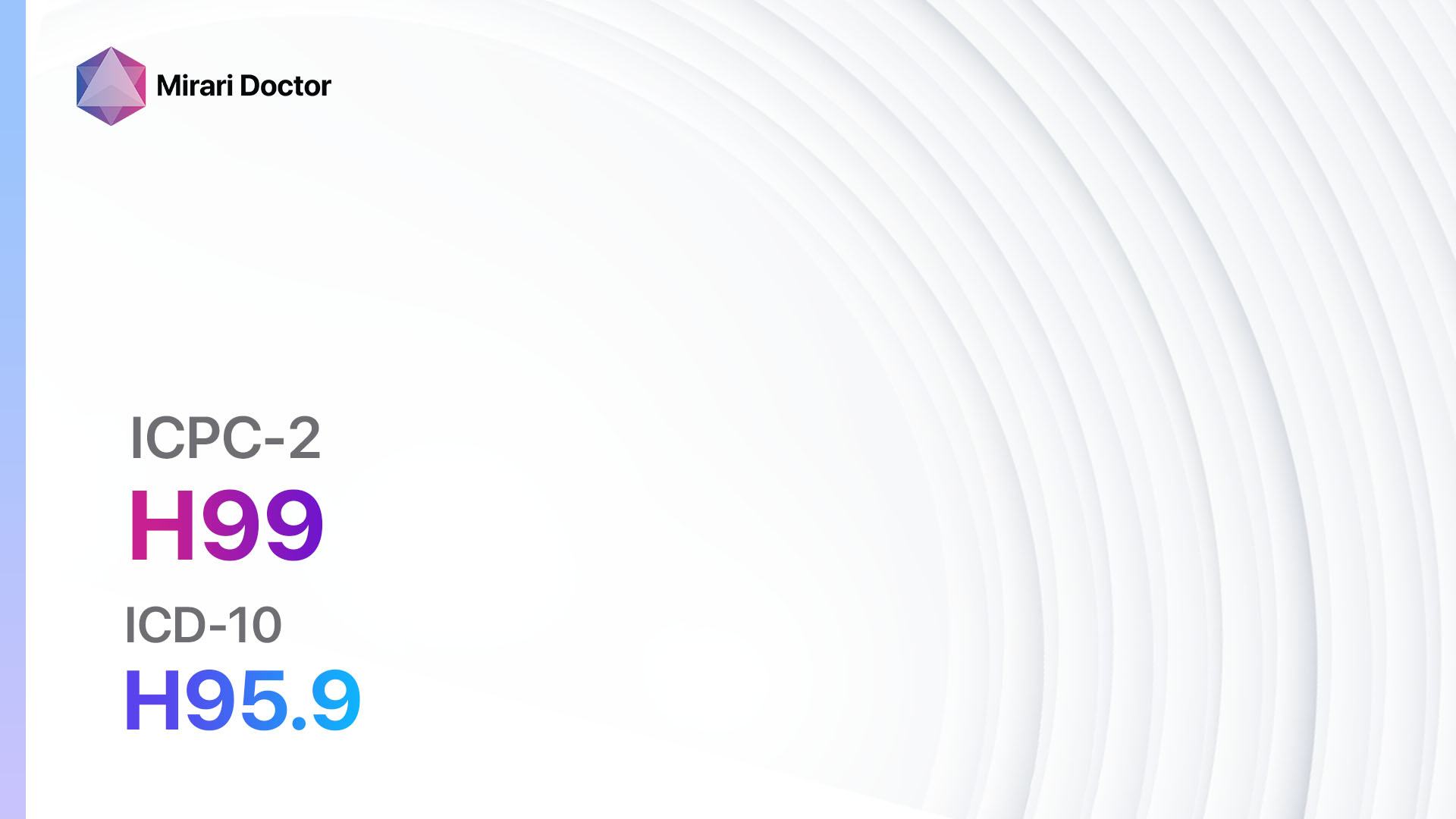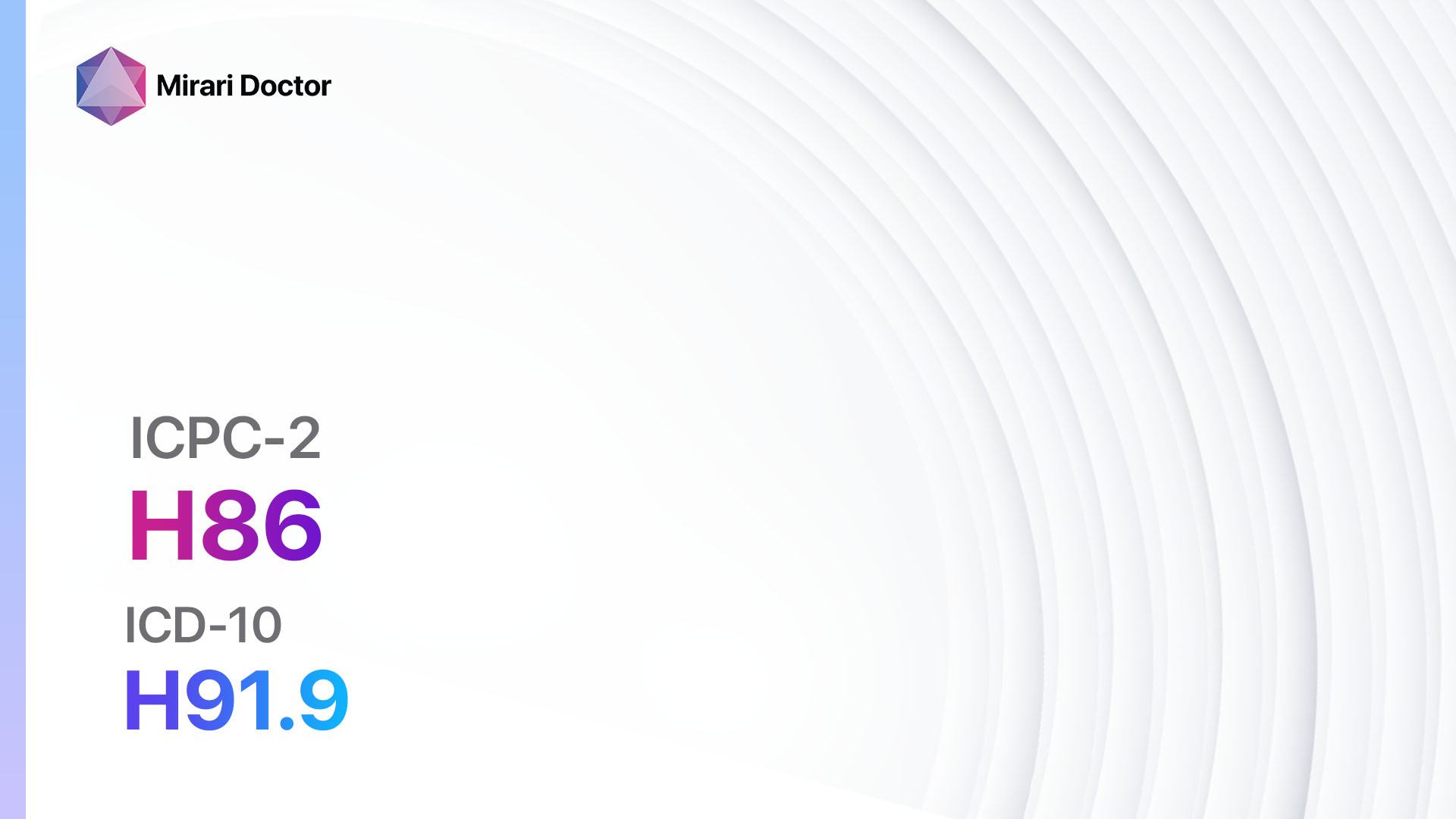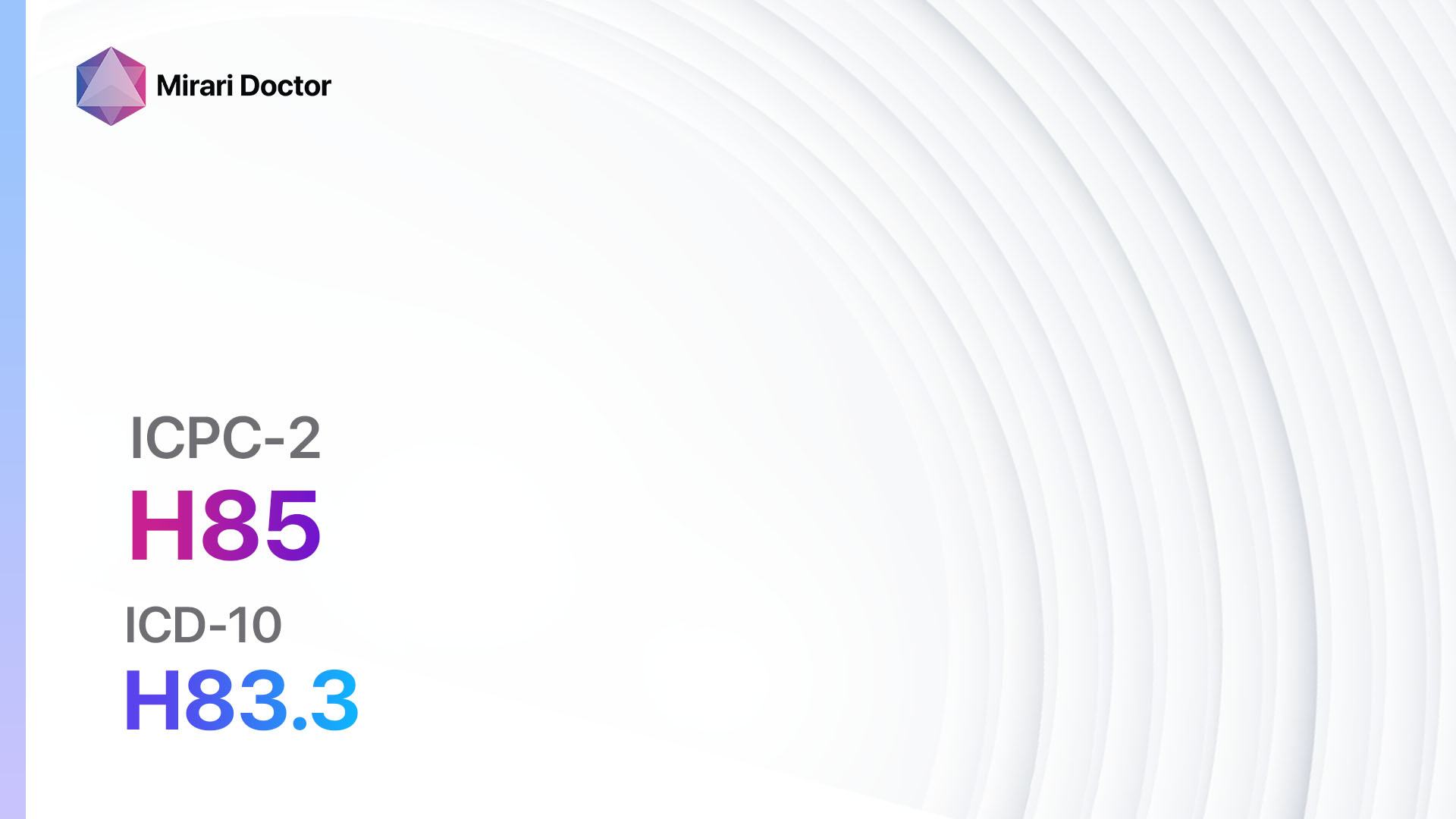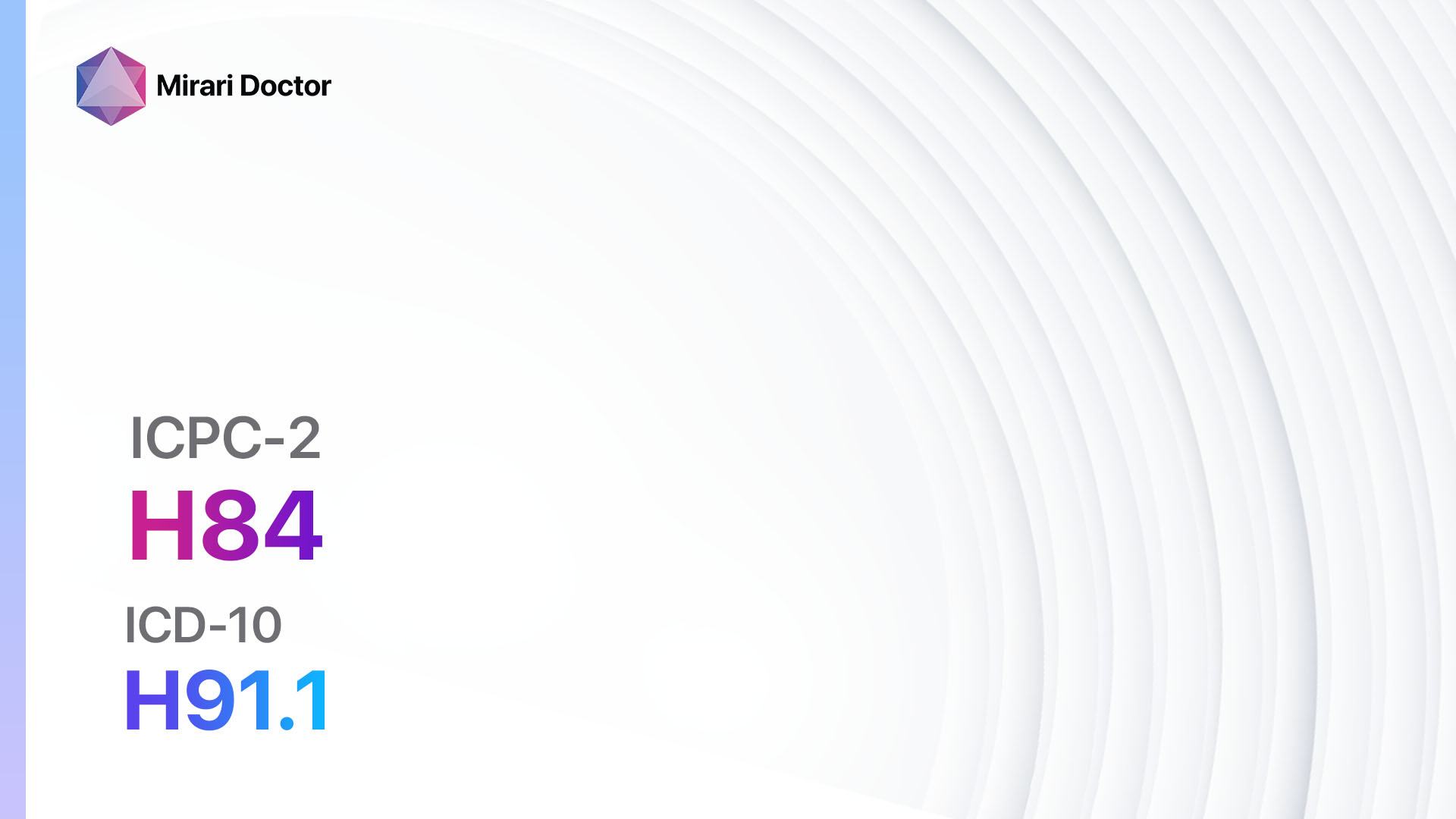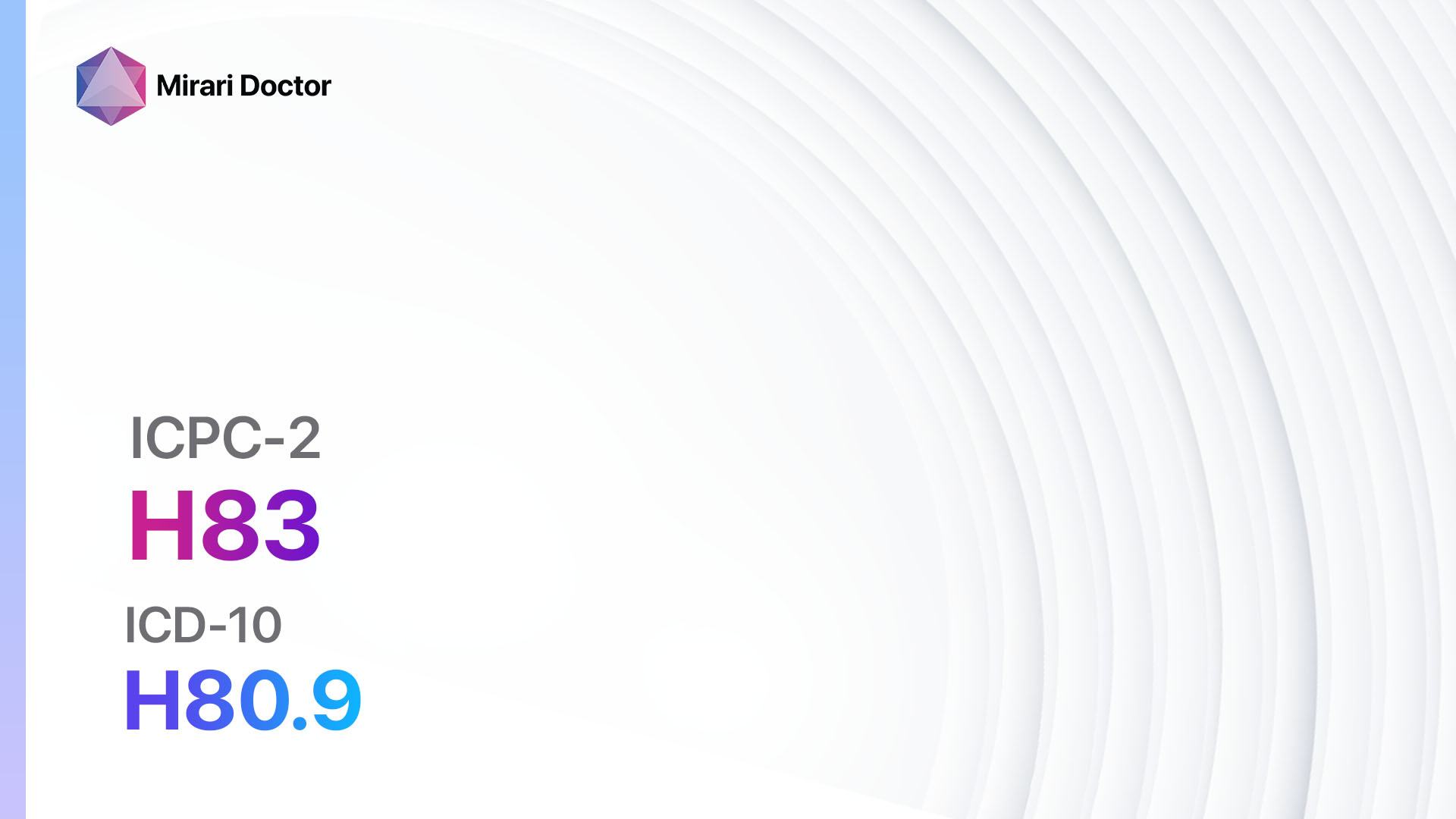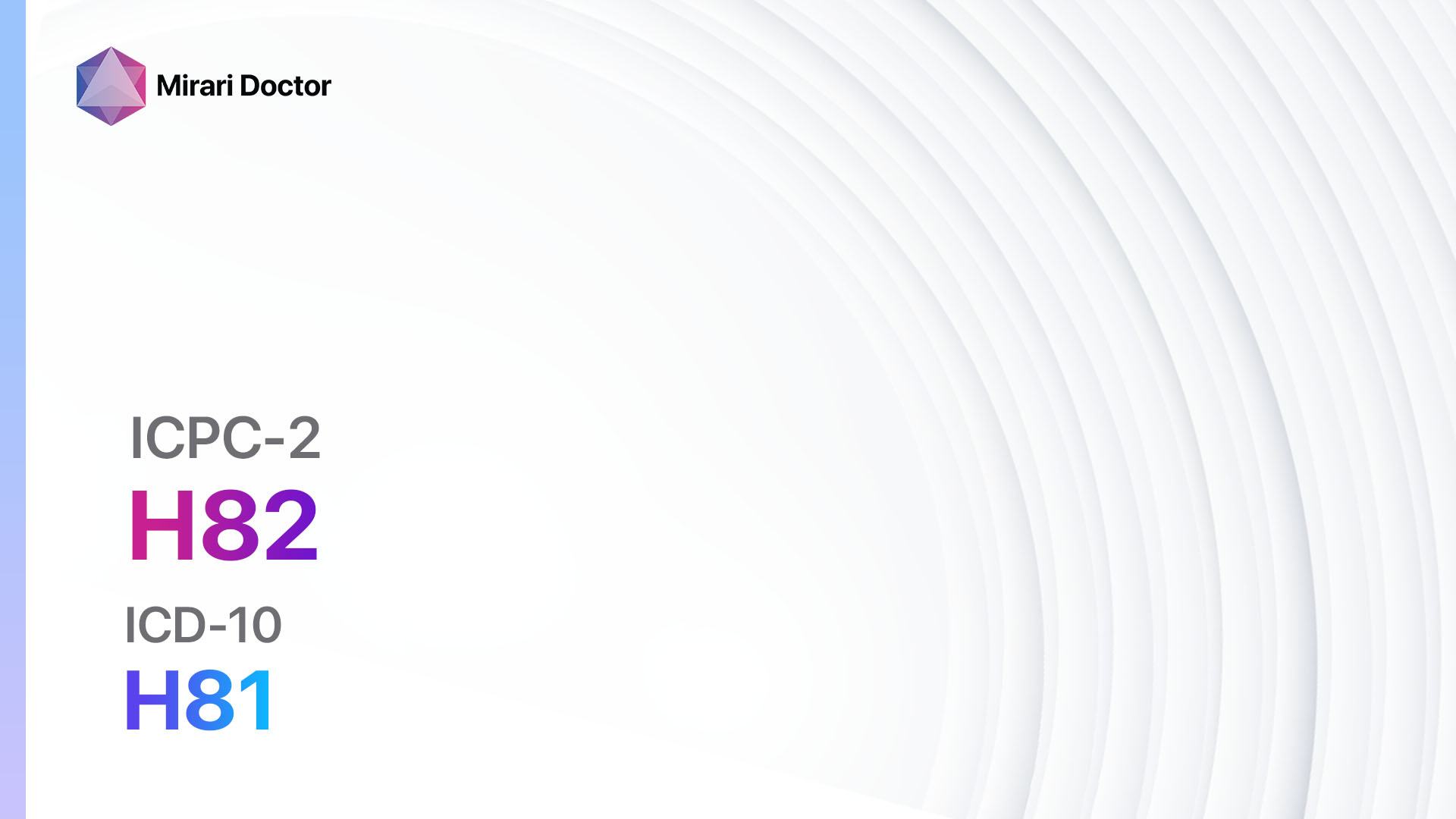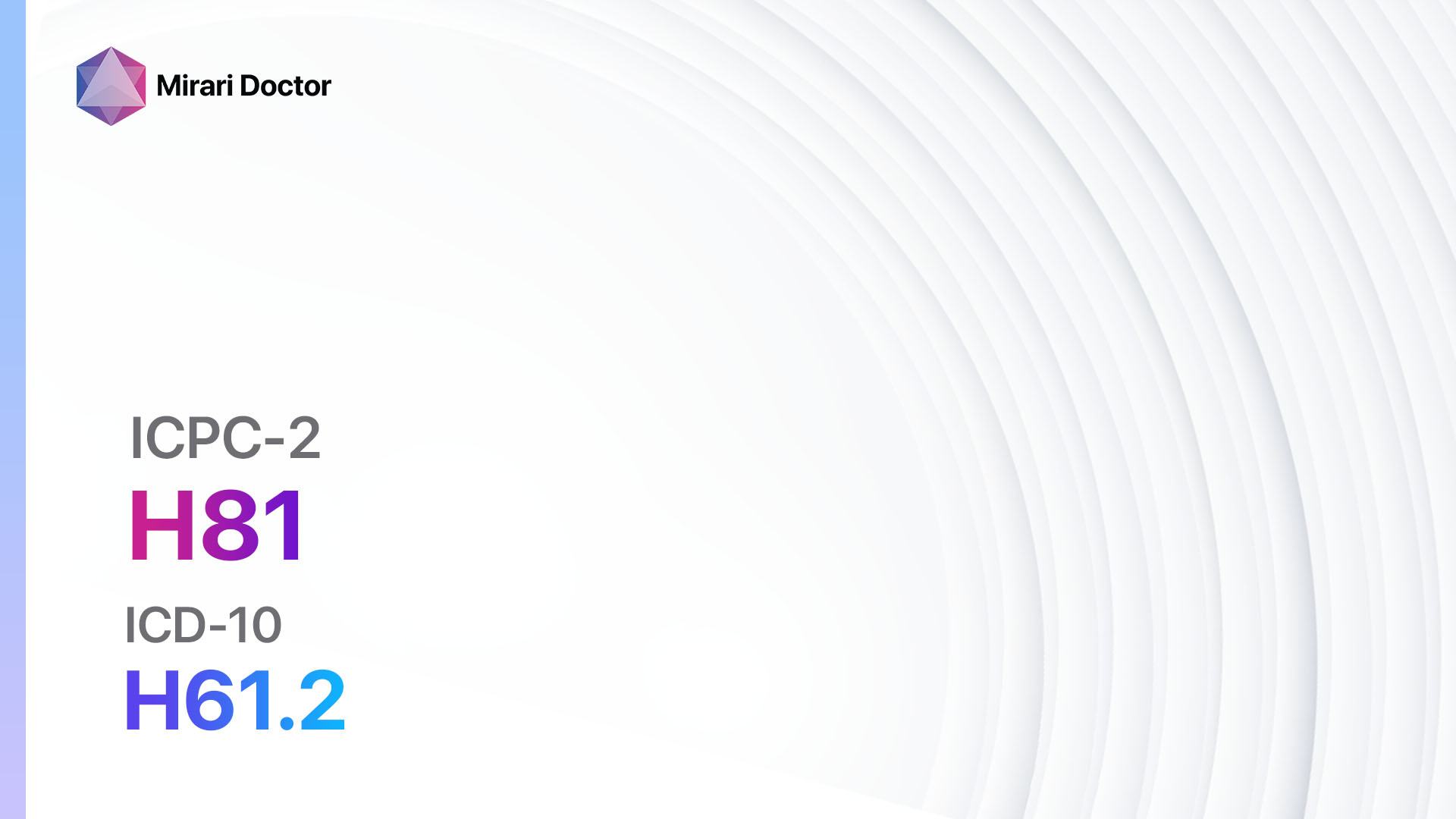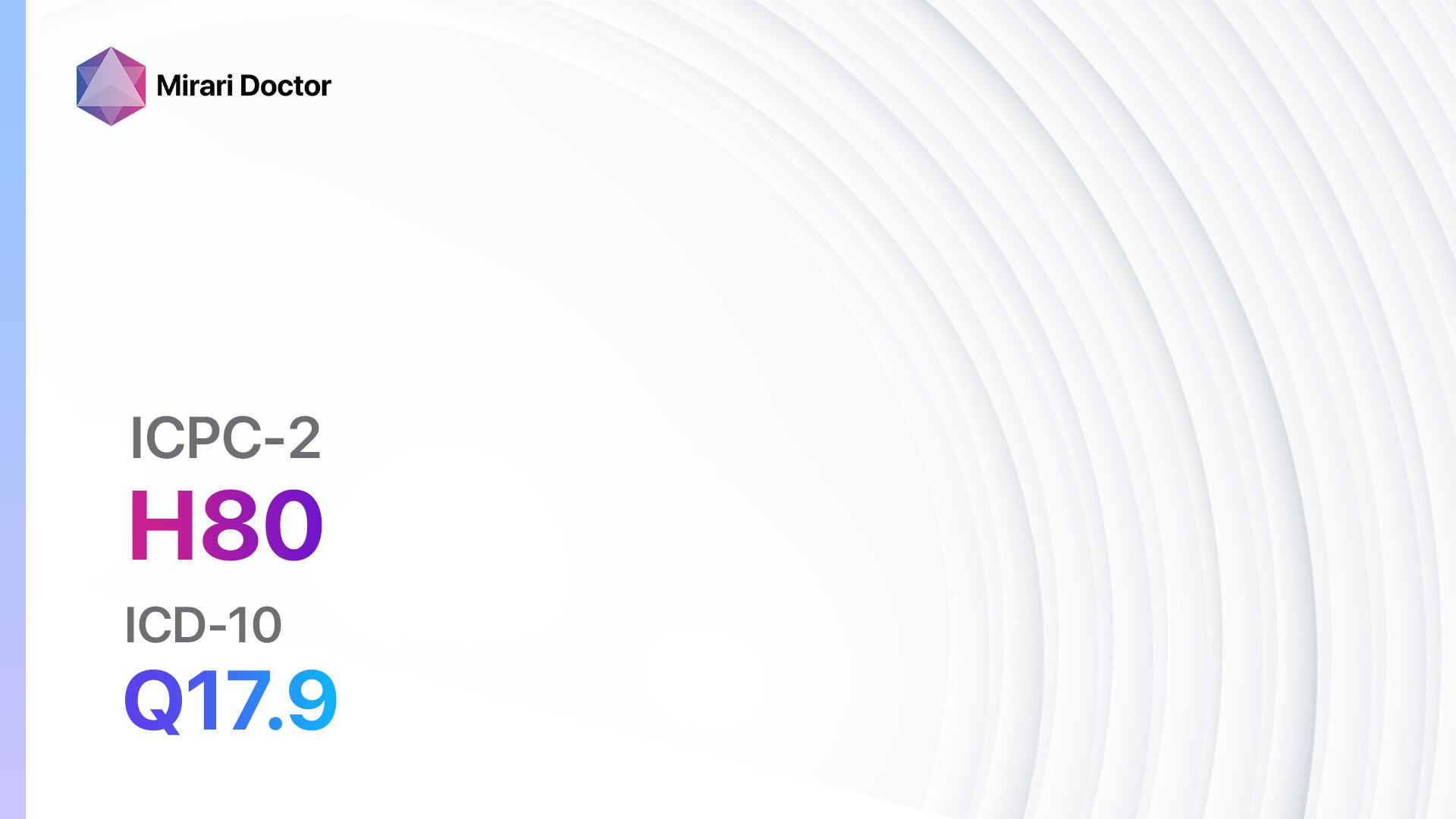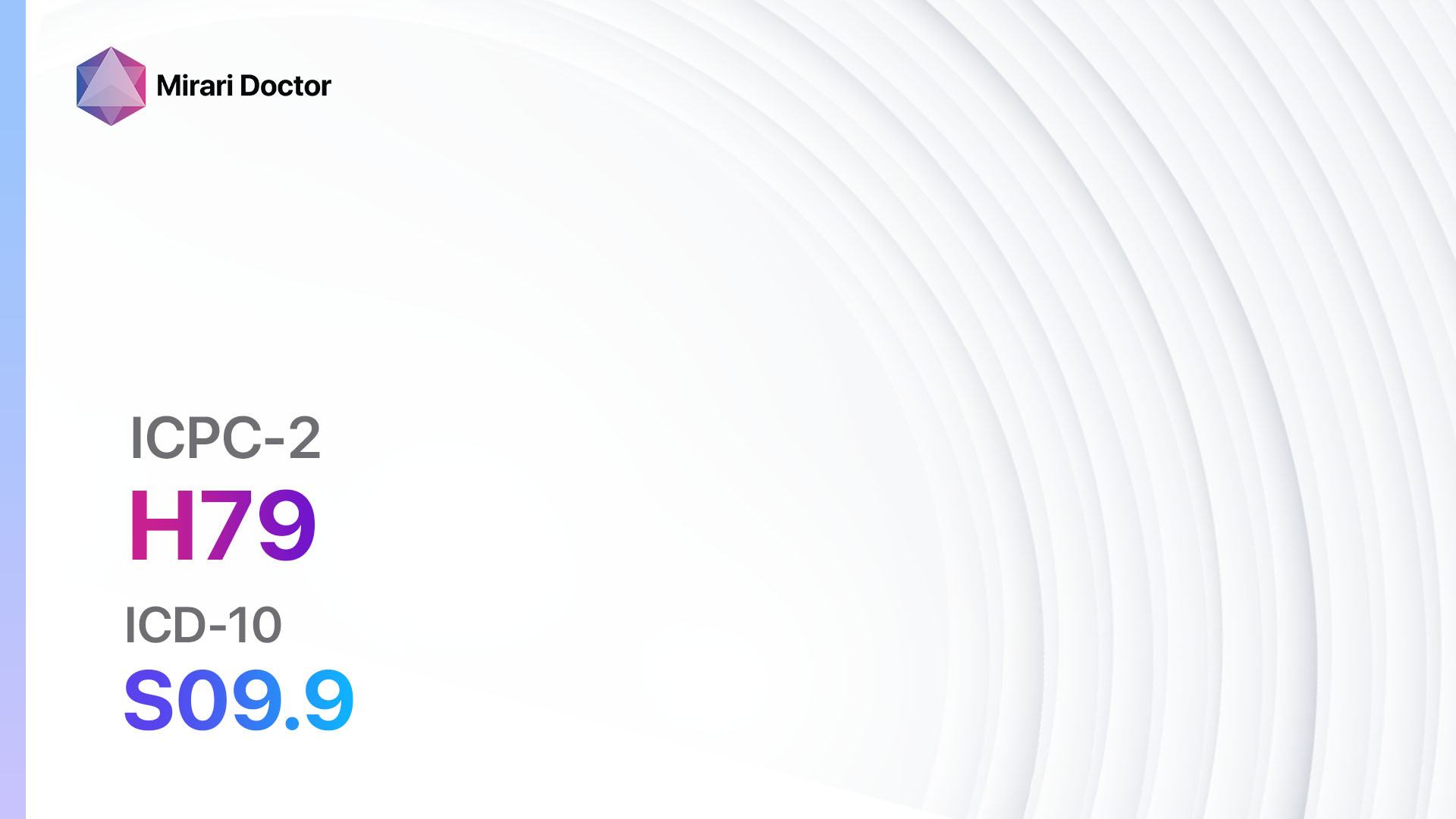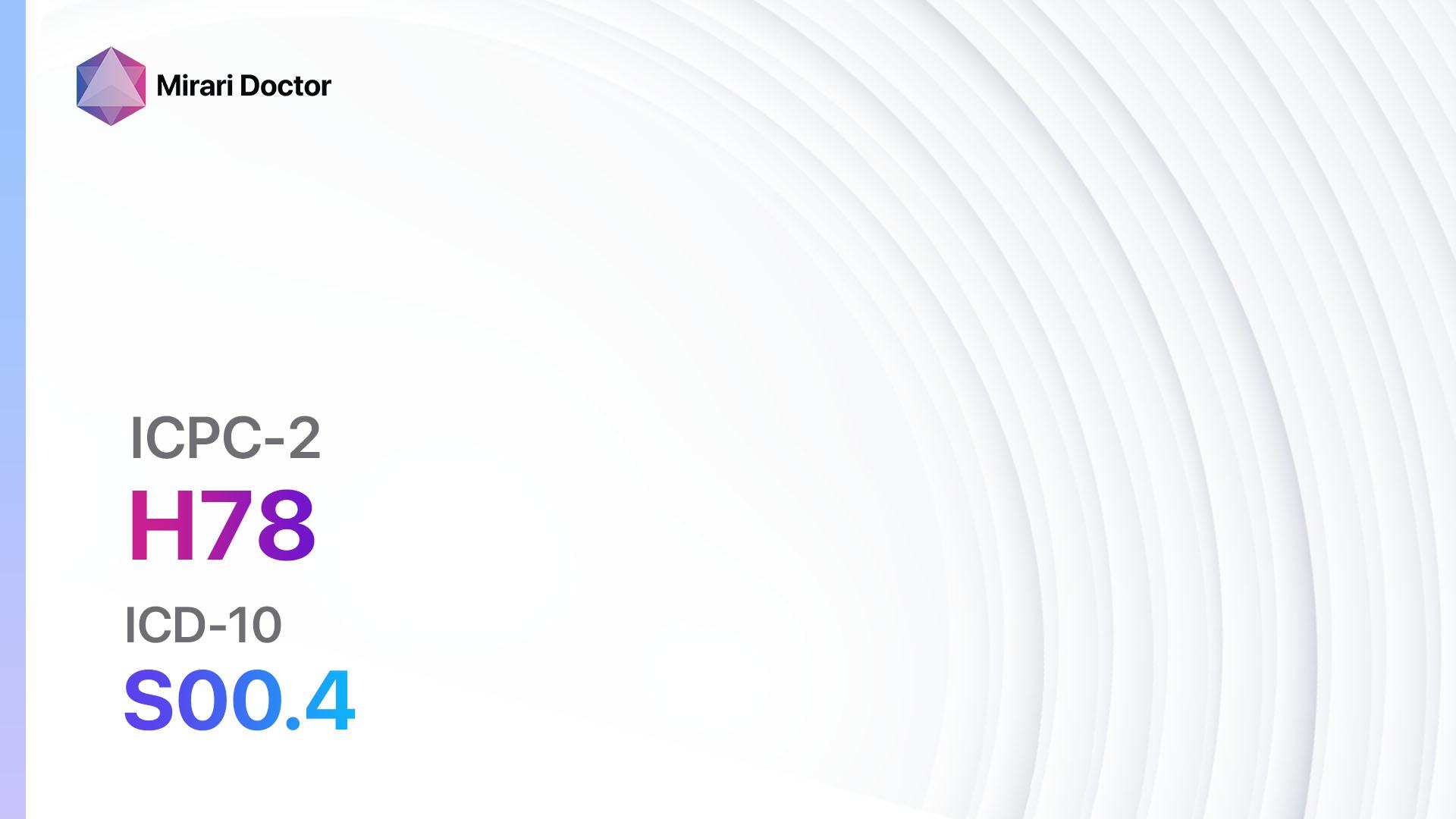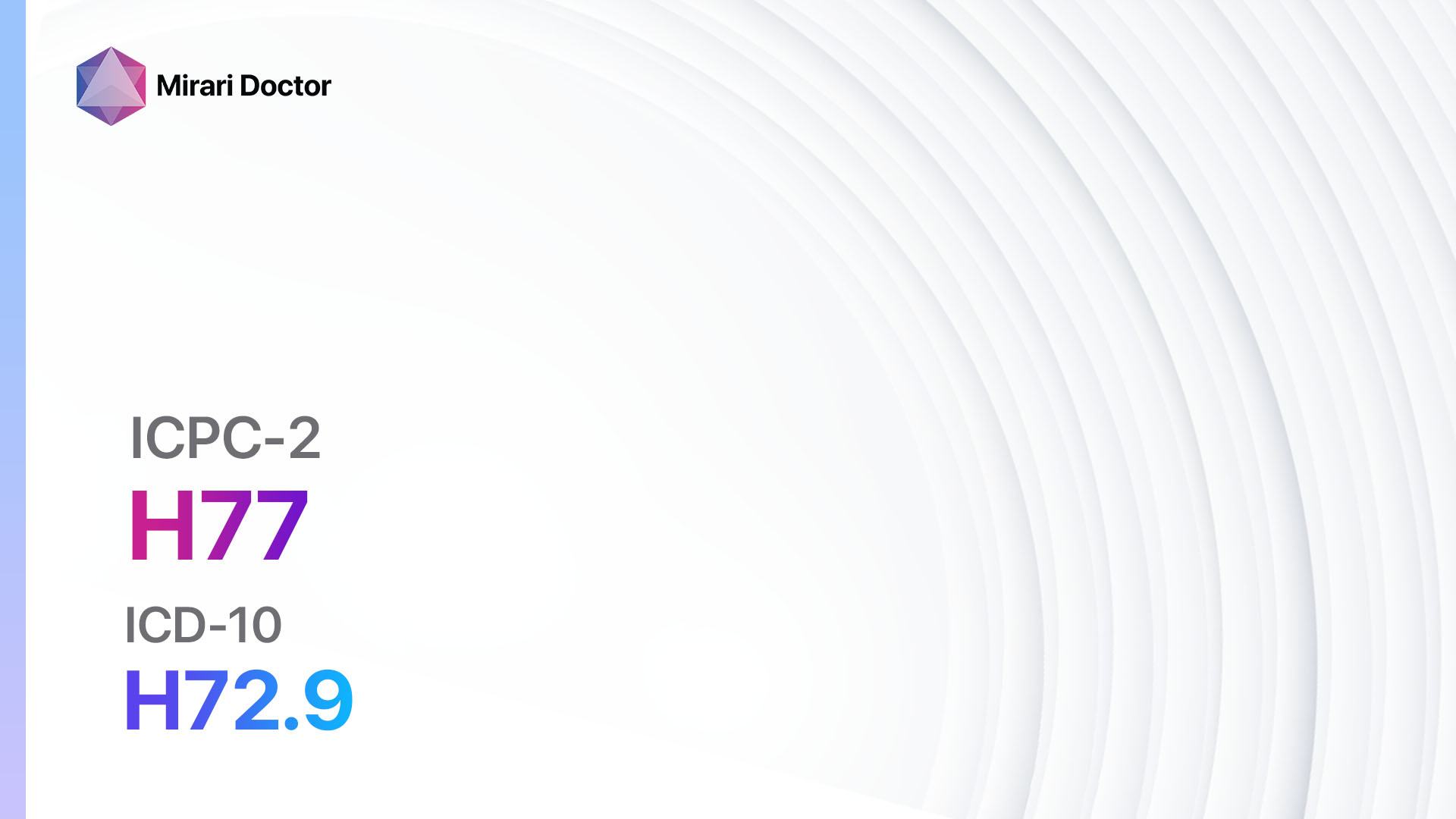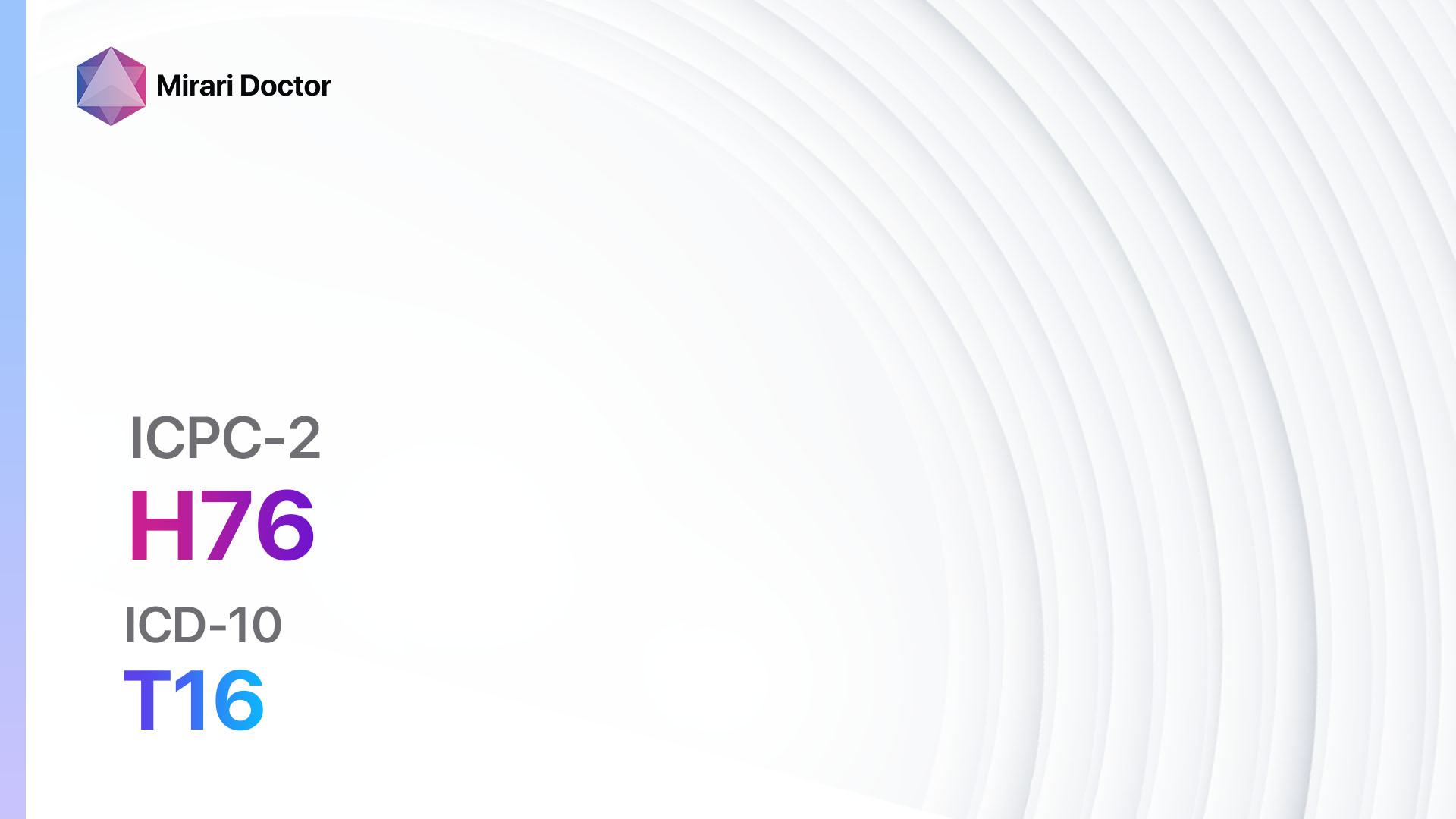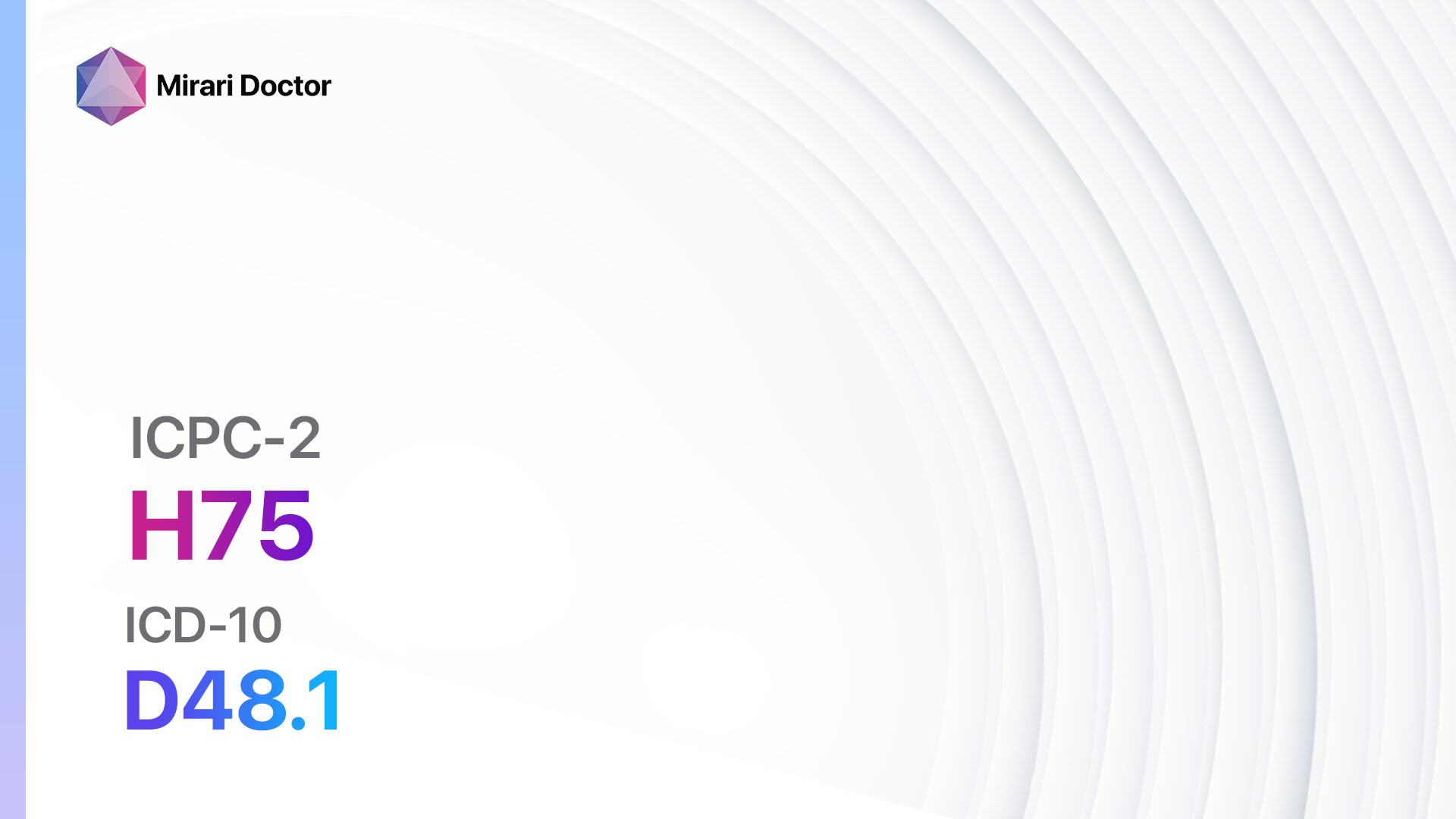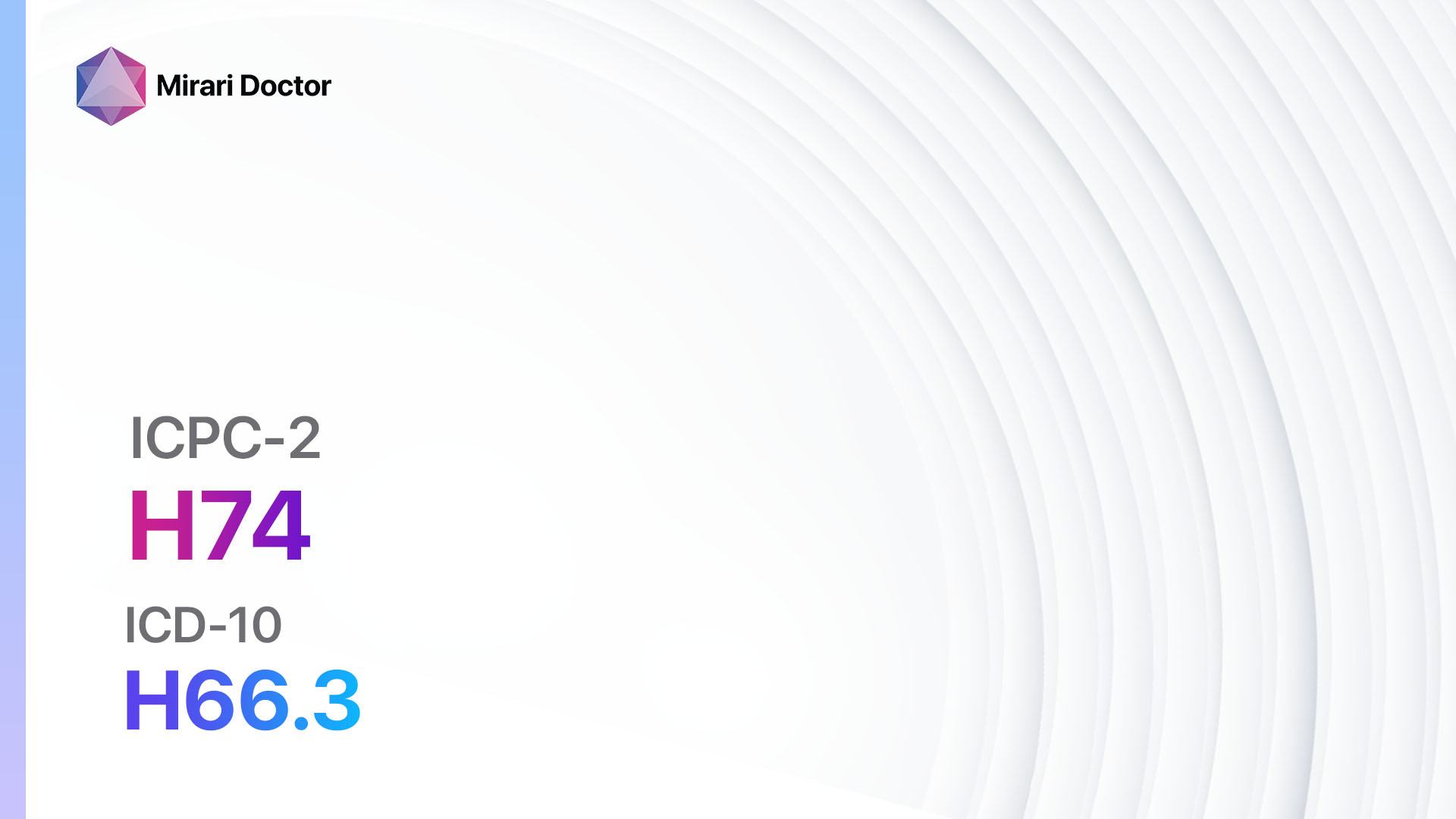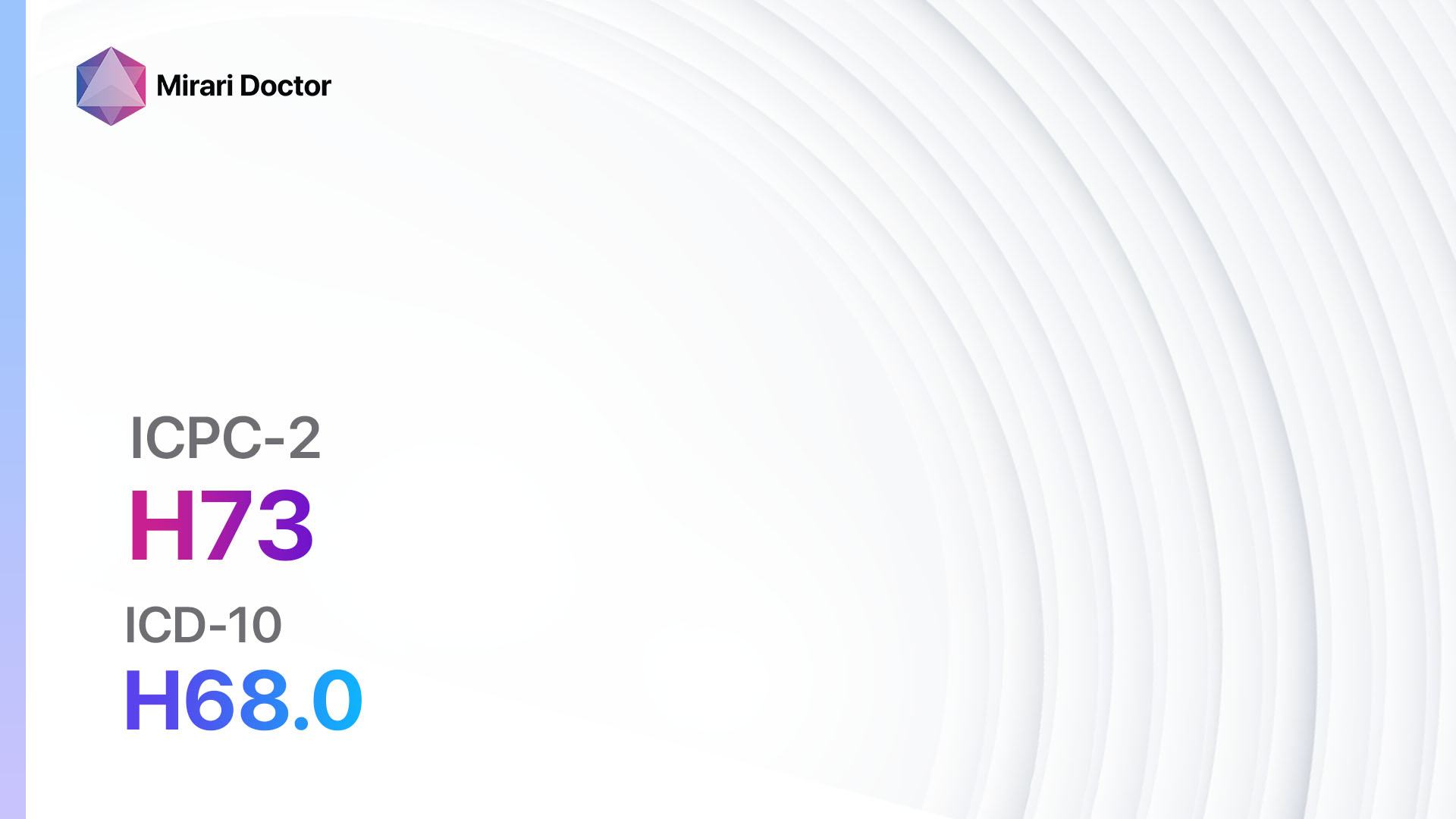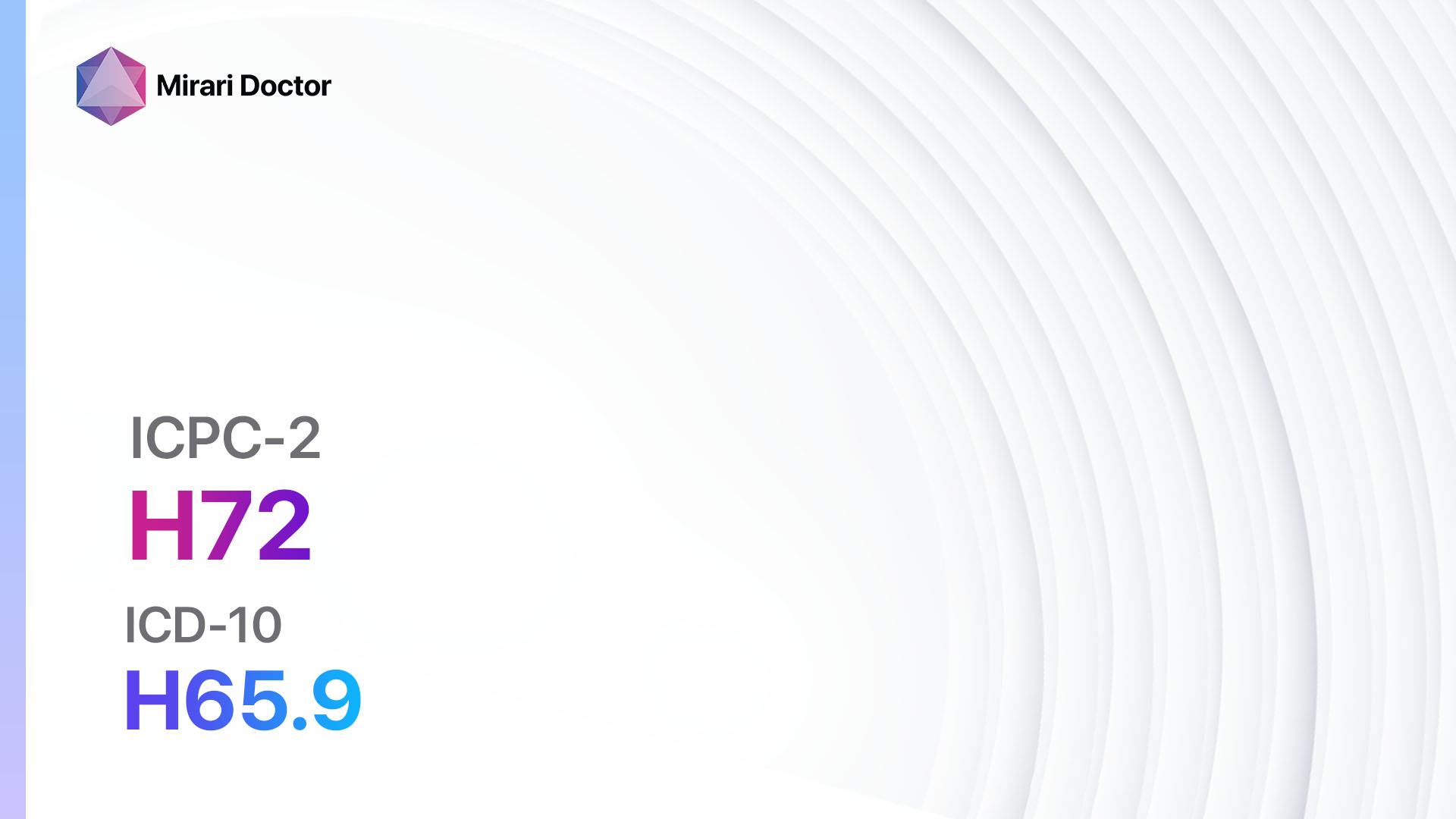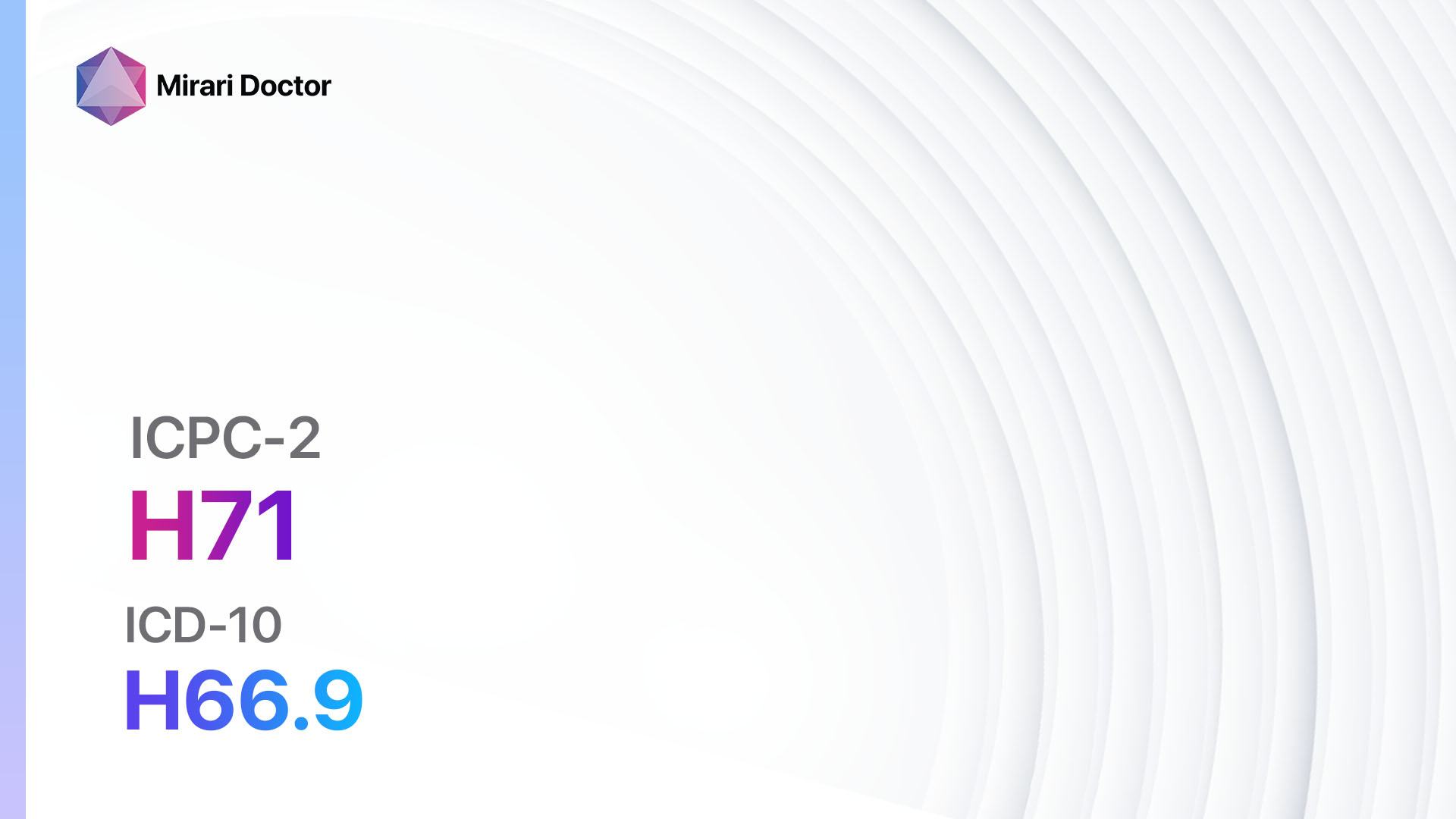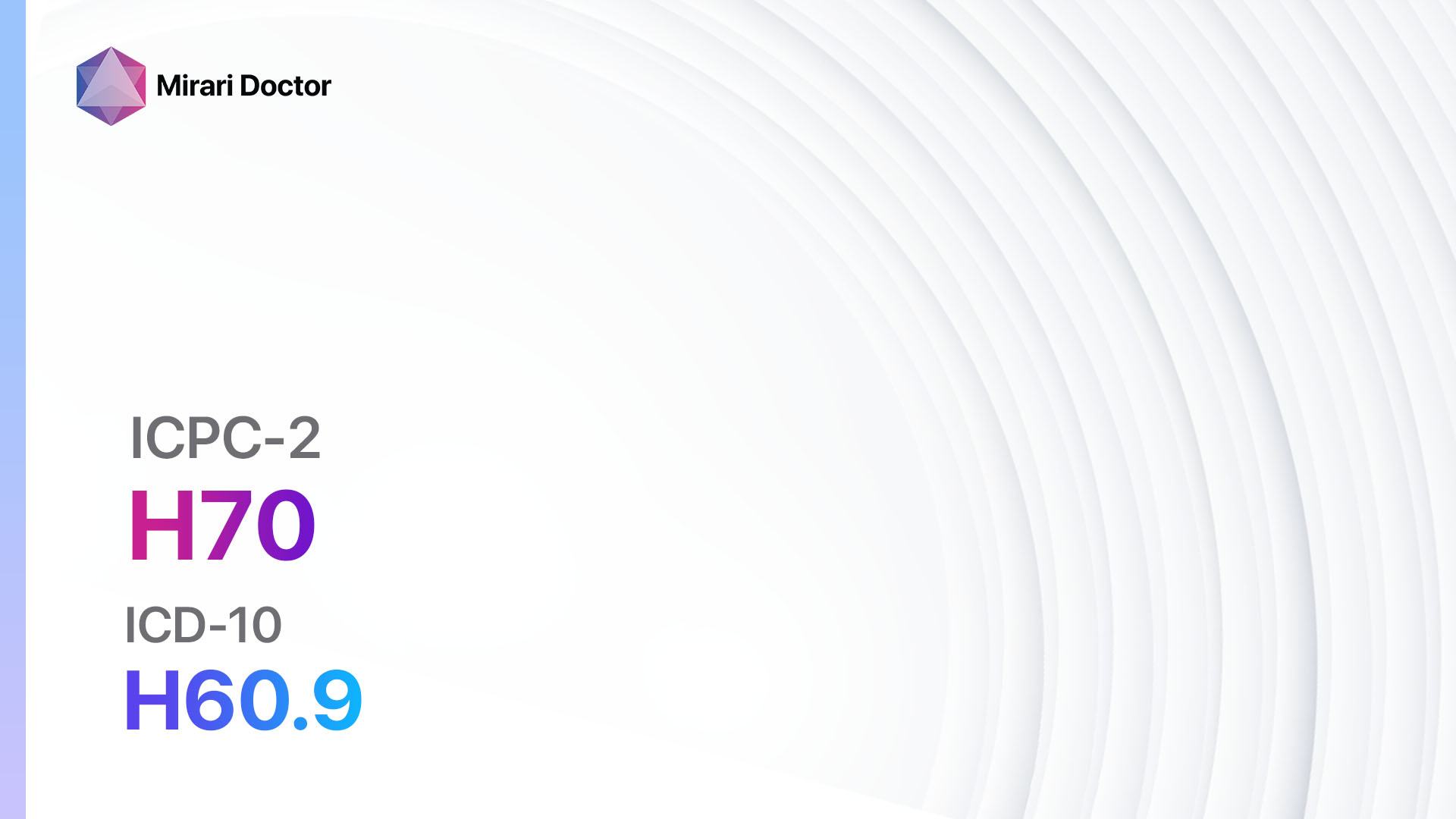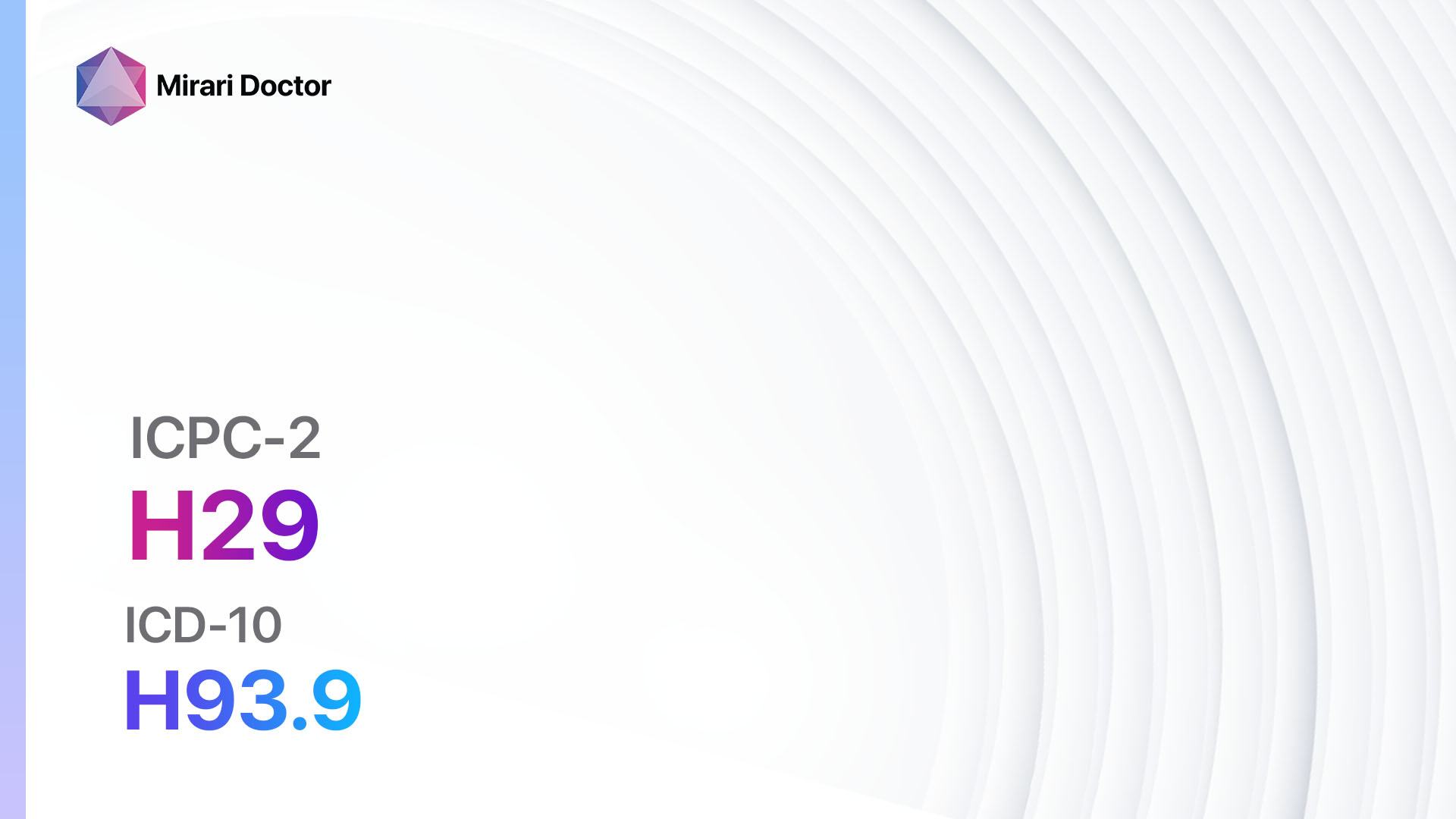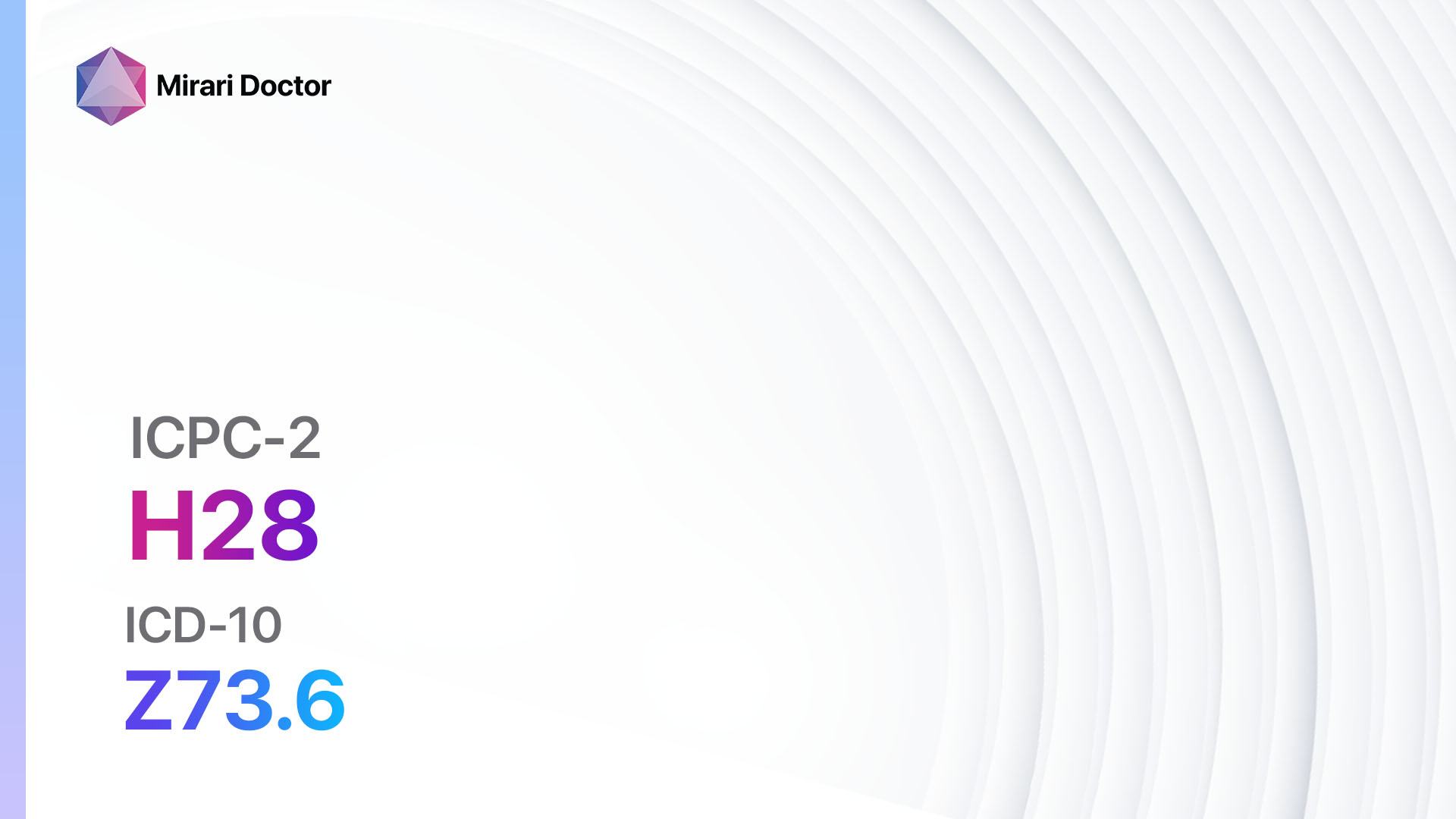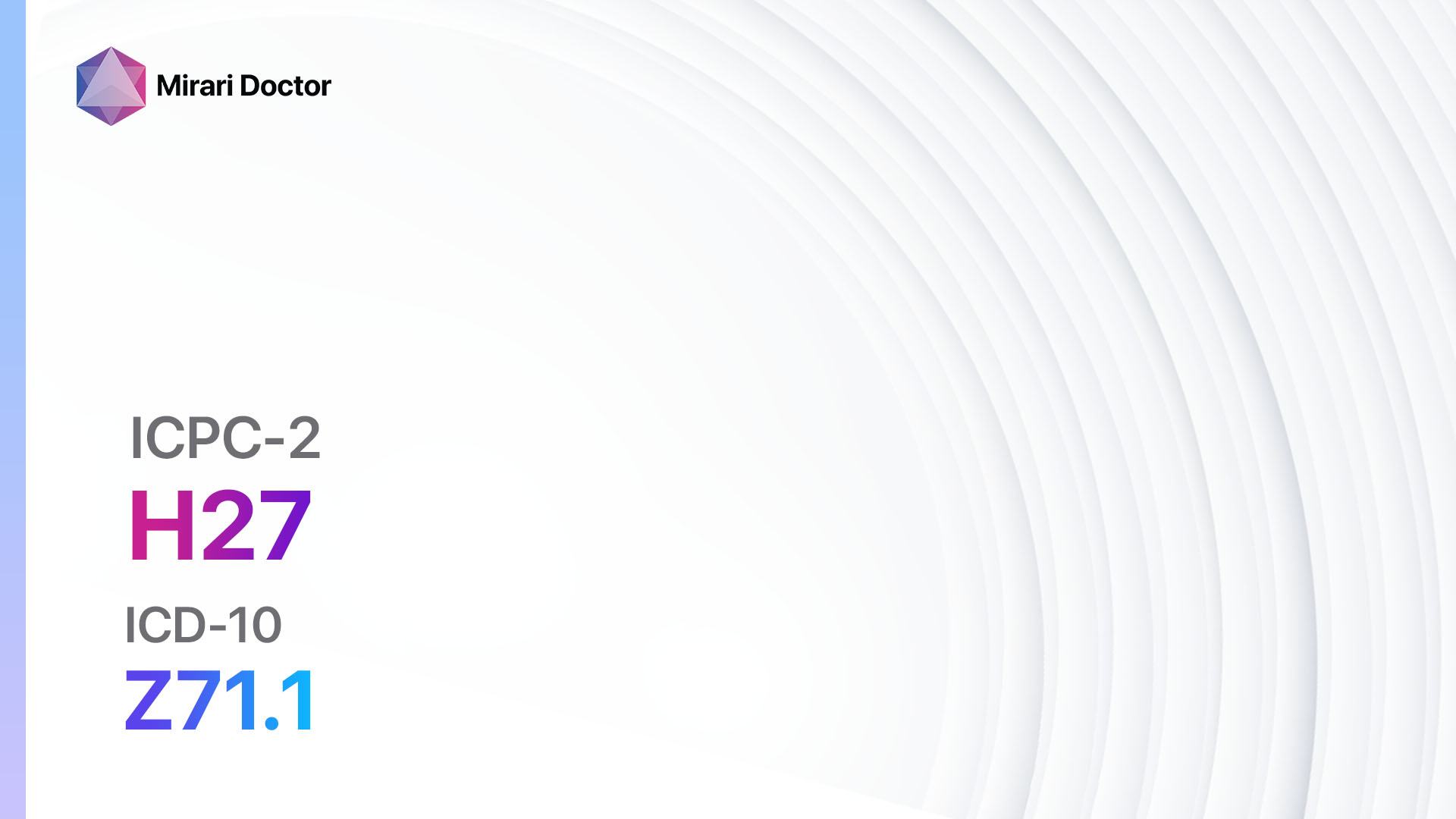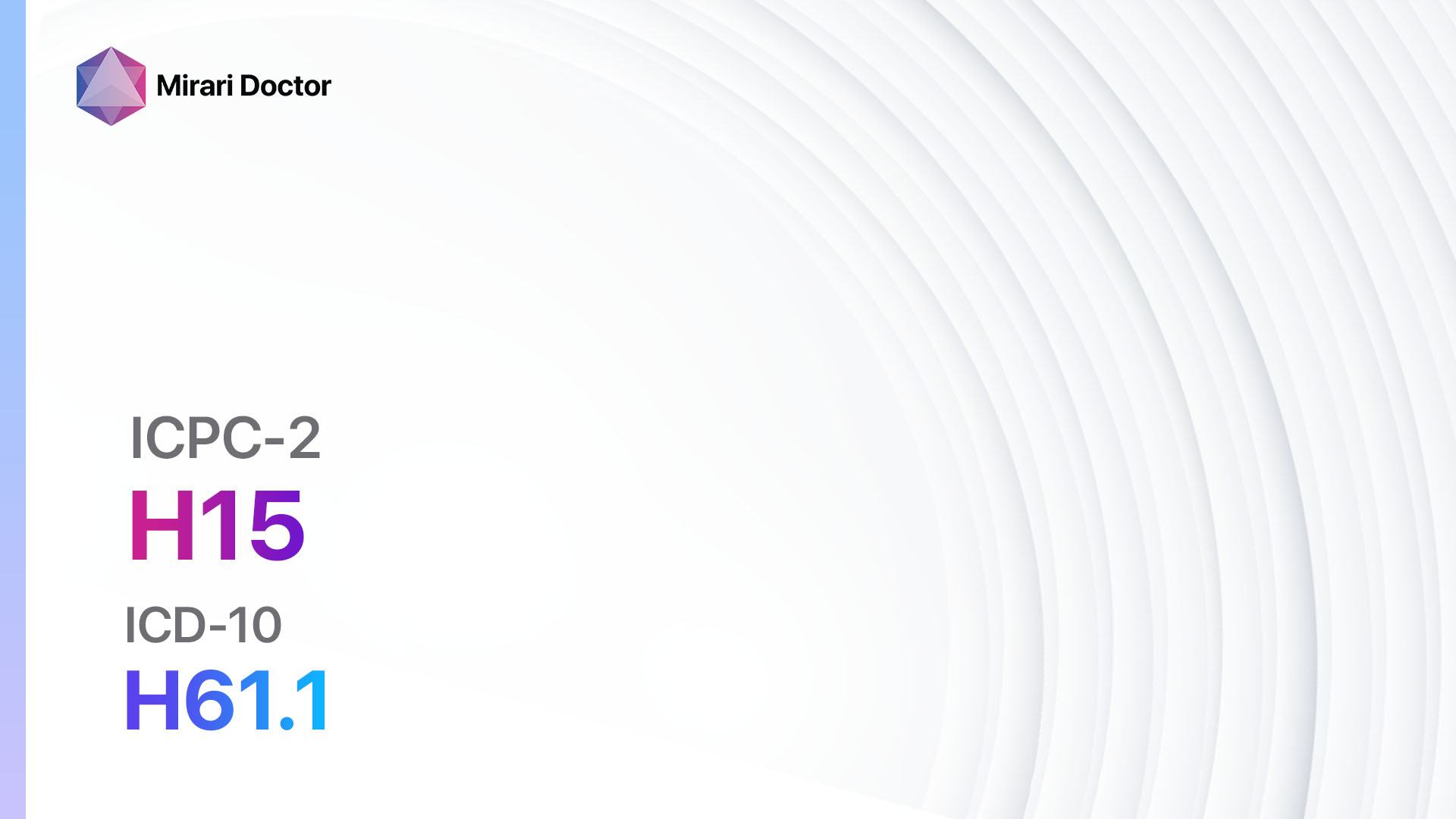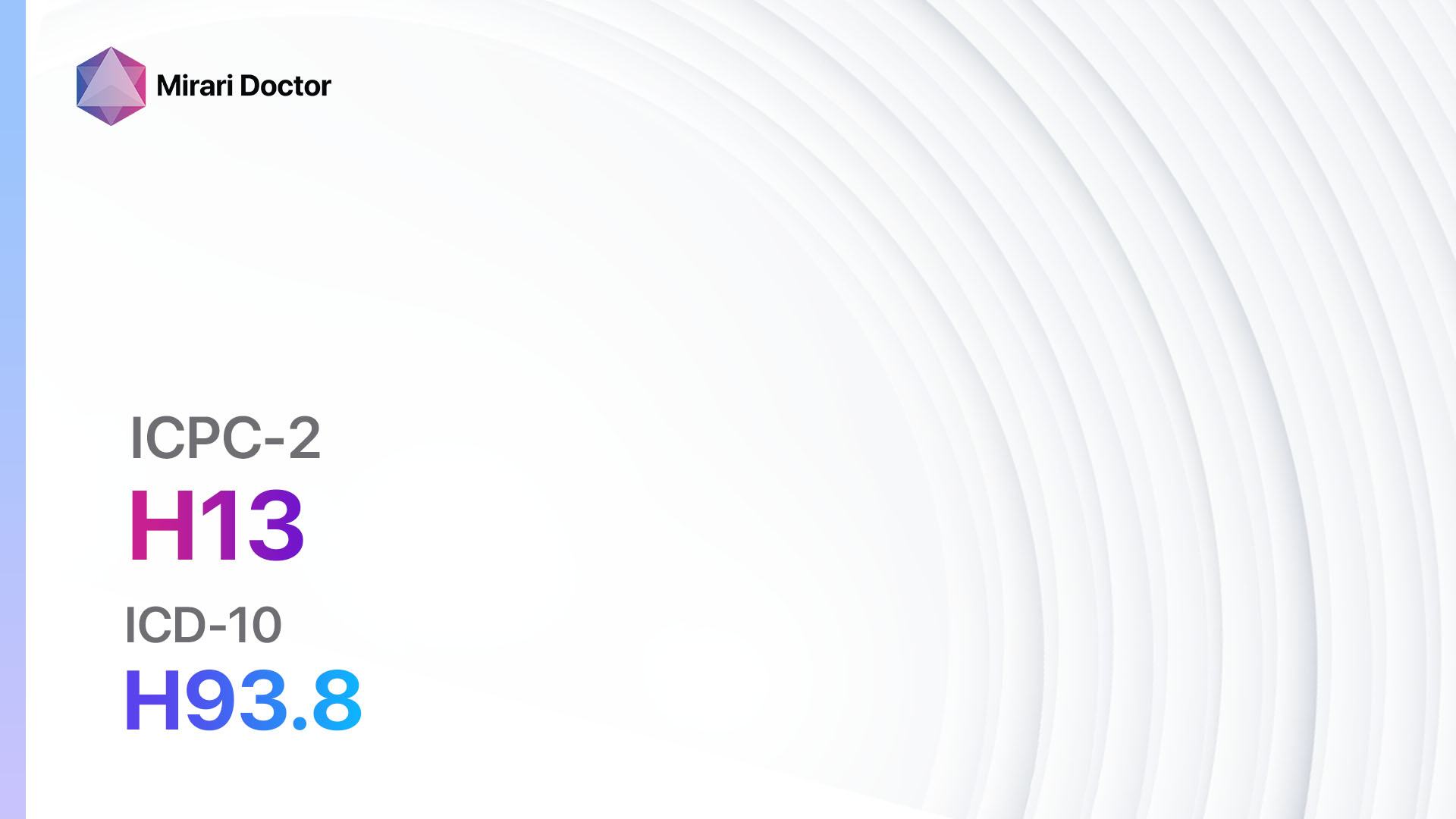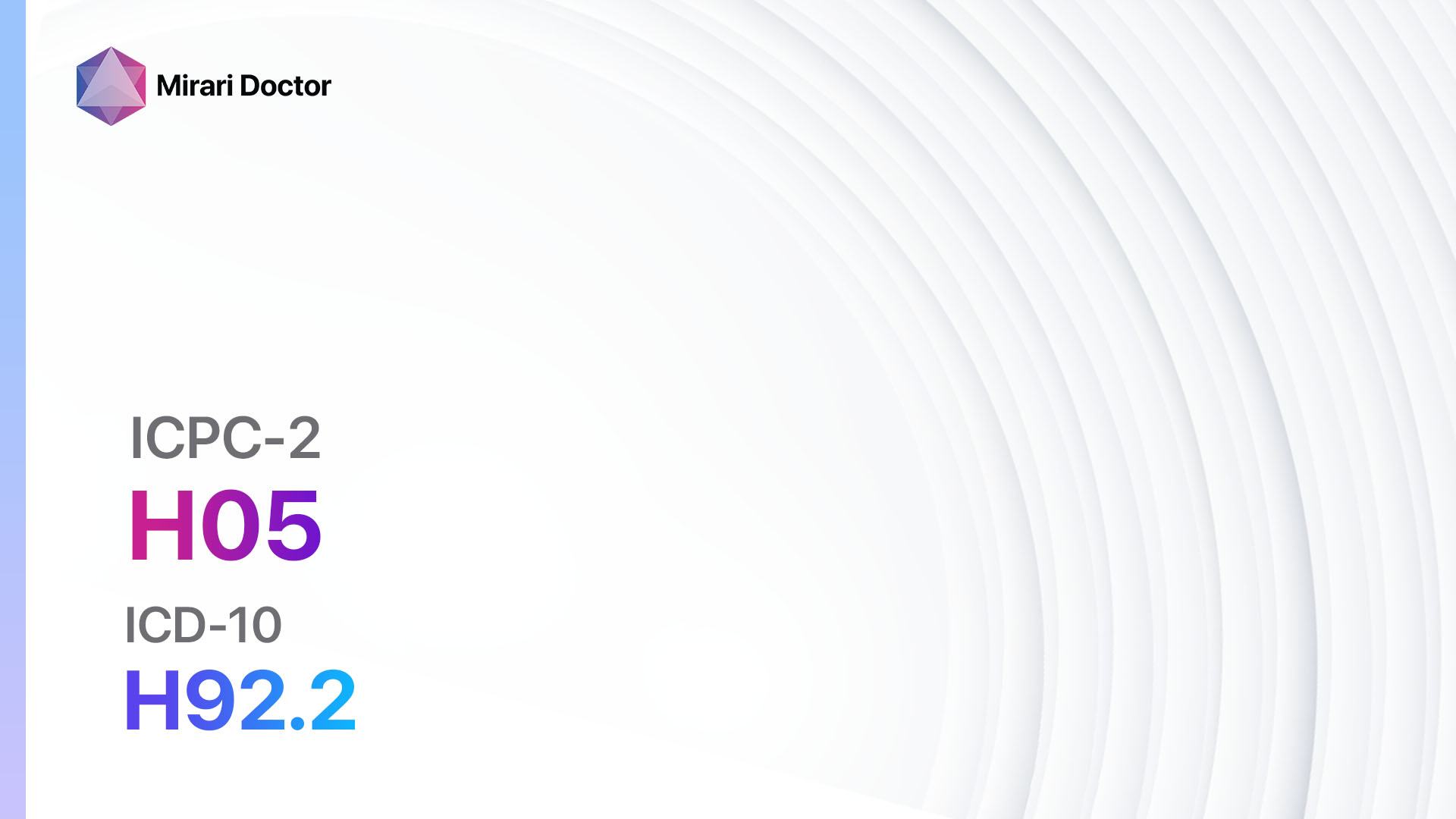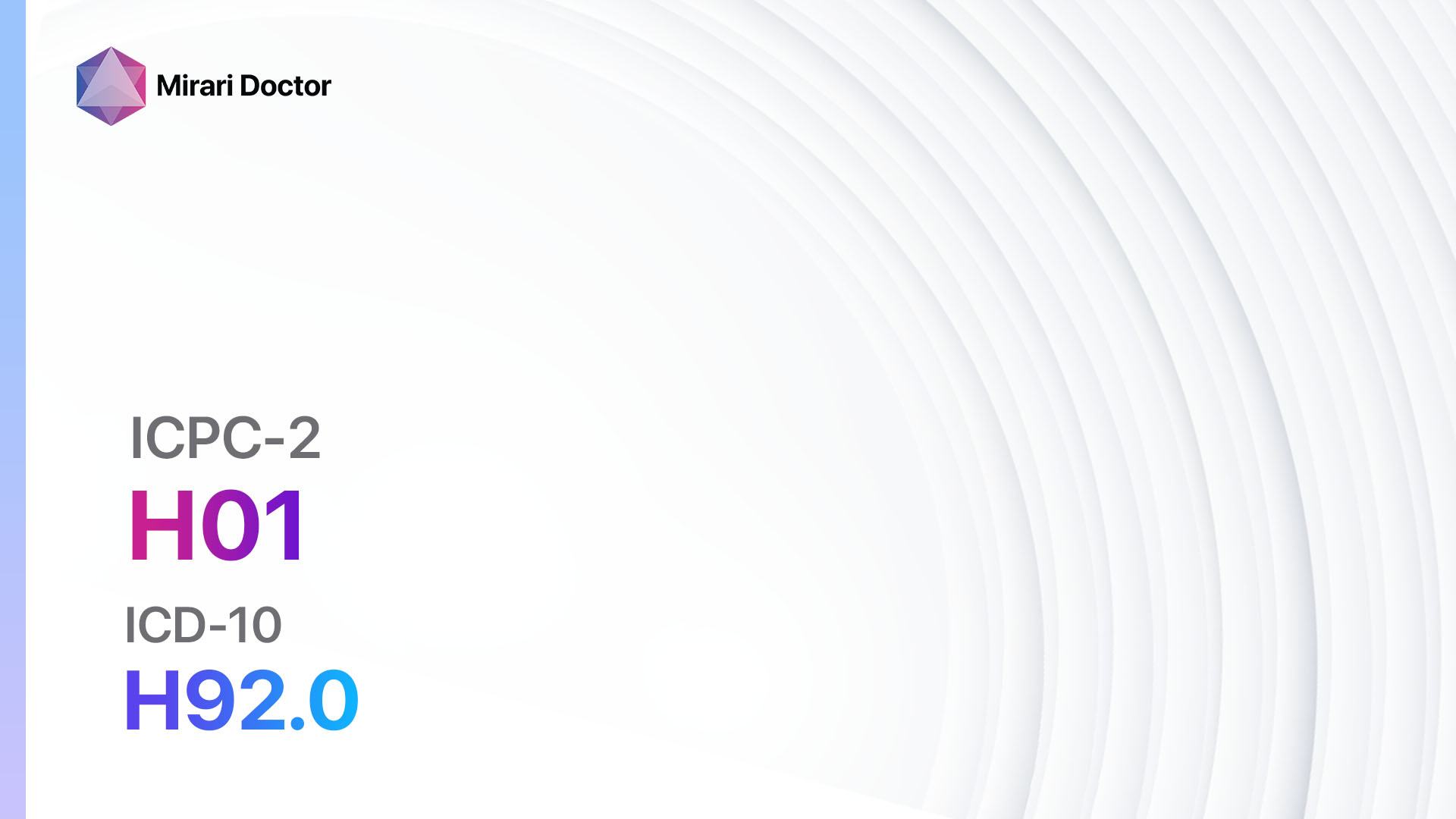
Introduction
Ear pain, also known as earache, is a common symptom that can be caused by various factors. It can range from mild discomfort to severe pain and can affect people of all ages[1]. The aim of this guide is to provide healthcare professionals with a comprehensive approach to diagnosing and managing ear pain/earache.
Codes
Symptoms
- Pain in the ear: Patients may experience a dull, sharp, or throbbing pain in the ear[4].
- Ear fullness or pressure: Patients may feel a sensation of fullness or pressure in the affected ear[4].
- Hearing loss: Some patients may experience a temporary or permanent decrease in hearing[5].
- Tinnitus: Patients may experience ringing, buzzing, or other noises in the ear[6].
- Ear drainage: In some cases, there may be discharge in the ear[6].
Causes
- Otitis media: Infection of the middle ear, often caused by bacteria or viruses[8].
- Otitis externa: Infection of the outer ear canal, commonly known as swimmer’s ear[9].
- Eustachian tube dysfunction: Blockage or dysfunction of the Eustachian tube, which connects the middle ear to the back of the throat[10].
- Temporomandibular joint (TMJ) disorder: Dysfunction of the joint that connects the jaw to the skull.
- Sinusitis: Inflammation or infection of the sinuses, which can cause referred pain to the ear.
- Dental problems: Tooth infection or dental abscess can cause referred pain to the ear.
- Trauma: Injury or trauma to the ear or surrounding structures.
- Foreign body: Presence of a foreign object in the ear canal.
- Barotrauma: Pressure changes during air travel or scuba diving can cause ear pain.
- Referred pain: Pain originating from other structures, such as the throat or jaw, can be felt in the ear.
Diagnostic Steps
Medical History
- Gather information about the patient’s symptoms, including the duration, severity, and associated factors.
- Ask about any previous episodes of ear pain or ear infections.
- Inquire about any recent illnesses, allergies, or exposure to irritants.
- Assess the patient’s medical history, including any underlying conditions or risk factors.
Physical Examination
- Inspect the external ear for signs of infection, inflammation, or trauma.
- Examine the ear canal and tympanic membrane using an otoscope.
- Palpate the jaw joint and surrounding structures for tenderness or abnormalities.
- Evaluate the neck and throat for any signs of infection or inflammation.
- Assess the sinuses for tenderness or swelling.
Laboratory Tests
- Complete blood count (CBC): To assess for signs of infection or inflammation.
- C-reactive protein (CRP): Elevated levels may indicate inflammation.
- Culture and sensitivity: If infection is suspected, a sample may be taken for laboratory analysis.
Diagnostic Imaging
- X-ray: Useful for evaluating the sinuses or temporomandibular joint.
- CT scan: Provides detailed images of the ear and surrounding structures.
- MRI: Can help identify soft tissue abnormalities or tumors.
Other Tests
- Audiometry: Measures hearing ability and can identify any hearing loss.
- Tympanometry: Assesses the movement of the eardrum and middle ear function.
- Allergy testing: If allergies are suspected as a cause, skin or blood tests may be performed.
Follow-up and Patient Education
- Schedule a follow-up appointment to monitor the patient’s progress and adjust treatment if necessary.
- Provide education on proper ear hygiene, including avoiding the use of cotton swabs and keeping the ears dry.
- Advise the patient on pain management techniques, such as over-the-counter pain relievers or warm compresses.
- Discuss the importance of completing the full course of any prescribed medications.
Possible Interventions
Traditional Interventions
Medications:
Top 5 drugs for Ear pain/earache:
- Acetaminophen (e.g., Tylenol):
- Cost: $5-$15 for a bottle of 100 tablets.
- Contraindications: Allergy to acetaminophen.
- Side effects: Rare, but can include liver damage with high doses.
- Severe side effects: Allergic reactions, liver failure.
- Drug interactions: Alcohol, certain medications (e.g., warfarin).
- Warning: Do not exceed the recommended dosage.
- Nonsteroidal anti-inflammatory drugs (NSAIDs) (e.g., Ibuprofen, Naproxen):
- Cost: $5-$20 for a bottle of 100 tablets.
- Contraindications: Active peptic ulcer disease, history of gastrointestinal bleeding.
- Side effects: Upset stomach, heartburn.
- Severe side effects: Gastrointestinal bleeding, kidney problems.
- Drug interactions: Blood thinners, certain medications (e.g., lithium).
- Warning: Long-term use can increase the risk of heart attack or stroke.
- Antibiotics (e.g., Amoxicillin, Ciprofloxacin):
- Cost: $10-$50 for a course of treatment.
- Contraindications: Allergy to the specific antibiotic.
- Side effects: Upset stomach, diarrhea.
- Severe side effects: Allergic reactions, severe diarrhea.
- Drug interactions: Certain medications (e.g., warfarin, oral contraceptives).
- Warning: Take the full course of antibiotics as prescribed.
- Ear drops (e.g., Neomycin, Polymyxin B, Hydrocortisone):
- Cost: $5-$20 for a bottle of ear drops.
- Contraindications: Allergy to any of the ingredients.
- Side effects: Mild stinging or burning sensation.
- Severe side effects: Allergic reactions, hearing loss (rare).
- Drug interactions: None reported.
- Warning: Use as directed and avoid inserting anything into the ear canal.
- Decongestants (e.g., Pseudoephedrine, Phenylephrine):
- Cost: $5-$15 for a box of 24 tablets.
- Contraindications: High blood pressure, heart disease.
- Side effects: Increased heart rate, elevated blood pressure.
- Severe side effects: Severe hypertension, heart attack (rare).
- Drug interactions: Certain medications (e.g., monoamine oxidase inhibitors).
- Warning: Do not exceed the recommended dosage or use for more than a few days.
Alternative Drugs:
- Homeopathic ear drops: Some patients may find relief with homeopathic ear drops, such as Similasan Earache Relief Drops. Cost: $10-$15 per bottle.
- Herbal remedies: Certain herbs, such as garlic oil or mullein oil, may have antimicrobial or anti-inflammatory properties. Cost: Varies depending on the specific product.
Surgical Procedures:
- Myringotomy: A small incision is made in the eardrum to relieve pressure or drain fluid. Cost: $2,000-$5,000.
- Tympanoplasty: Reconstruction of the eardrum or middle ear bones. Cost: $5,000-$10,000.
Alternative Interventions
- Warm compress: Applying a warm compress to the affected ear can help relieve pain. Cost: Free.
- Garlic oil: Some individuals find relief by putting a few drops of warm garlic oil into the ear. Cost: $5-$10 for a bottle of garlic oil.
- Chiropractic care: Spinal adjustments may help alleviate ear pain associated with TMJ dysfunction. Cost: $50-$100 per session.
- Acupuncture: May help reduce pain and inflammation. Cost: $60-$120 per session.
- Herbal supplements: Certain herbs, such as chamomile or lavender, may have calming or analgesic effects. Cost: Varies depending on the specific supplement.
Lifestyle Interventions
- Avoiding irritants: Advise the patient to avoid exposure to cigarette smoke, allergens, or other irritants that may exacerbate ear pain. Cost: Free.
- Proper ear hygiene: Instruct the patient to avoid inserting objects into the ear canal and to keep the ears clean and dry. Cost: Free.
- Stress management: Stress can worsen pain perception, so encourage the patient to engage in stress-reducing activities, such as exercise or meditation. Cost: Free or minimal cost.
- Dietary modifications: Some individuals find that reducing their intake of inflammatory foods, such as processed sugars or gluten, can help alleviate ear pain. Cost: Varies depending on dietary choices.
- Warm saline gargles: Gargling with warm saline solution can help relieve throat pain that may be referred to the ear. Cost: Free.
It is important to note that the cost ranges provided are approximate and may vary depending on the location and availability of the interventions.
Mirari Cold Plasma Alternative Intervention
Understanding Mirari Cold Plasma
- Safe and Non-Invasive Treatment: Mirari Cold Plasma is a safe and non-invasive treatment option for various skin conditions. It does not require incisions, minimizing the risk of scarring, bleeding, or tissue damage.
- Efficient Extraction of Foreign Bodies: Mirari Cold Plasma facilitates the removal of foreign bodies from the skin by degrading and dissociating organic matter, allowing easier access and extraction.
- Pain Reduction and Comfort: Mirari Cold Plasma has a local analgesic effect, providing pain relief during the treatment, making it more comfortable for the patient.
- Reduced Risk of Infection: Mirari Cold Plasma has antimicrobial properties, effectively killing bacteria and reducing the risk of infection.
- Accelerated Healing and Minimal Scarring: Mirari Cold Plasma stimulates wound healing and tissue regeneration, reducing healing time and minimizing the formation of scars.
Mirari Cold Plasma Prescription
Video instructions for using Mirari Cold Plasma Device – H01 Ear pain/earache (ICD-10:H92.0)
| Mild | Moderate | Severe |
| Mode setting: 1 (Infection) Location: 0 (Localized) Morning: 15 minutes, Evening: 15 minutes |
Mode setting: 1 (Infection) Location: 0 (Localized) Morning: 30 minutes, Lunch: 30 minutes, Evening: 30 minutes |
Mode setting: 1 (Infection) Location: 0 (Localized) Morning: 30 minutes, Lunch: 30 minutes, Evening: 30 minutes |
| Mode setting: 2 (Wound Healing) Location: 0 (Localized) Morning: 15 minutes, Evening: 15 minutes |
Mode setting: 2 (Wound Healing) Location: 0 (Localized) Morning: 30 minutes, Lunch: 30 minutes, Evening: 30 minutes |
Mode setting: 2 (Wound Healing) Location: 0 (Localized) Morning: 30 minutes, Lunch: 30 minutes, Evening: 30 minutes |
| Mode setting: 3 (Antiviral Therapy) Location: 7 (Neuro system & ENT) Morning: 15 minutes, Evening: 15 minutes |
Mode setting: 3 (Antiviral Therapy) Location: 7 (Neuro system & ENT) Morning: 30 minutes, Lunch: 30 minutes, Evening: 30 minutes |
Mode setting: 3 (Antiviral Therapy) Location: 7 (Neuro system & ENT) Morning: 30 minutes, Lunch: 30 minutes, Evening: 30 minutes |
| Total Morning: 45 minutes approx. $7.50 USD, Evening: 45 minutes approx. $7.50 USD |
Total Morning: 90 minutes approx. $15 USD, Lunch: 90 minutes approx. $15 USD, Evening: 90 minutes approx. $15 USD, |
Total Morning: 90 minutes approx. $15 USD, Lunch: 90 minutes approx. $15 USD, Evening: 90 minutes approx. $15 USD, |
| Usual treatment for 7-60 days approx. $105 USD – $900 USD | Usual treatment for 6-8 weeks approx. $1,890 USD – $2,520 USD |
Usual treatment for 3-6 months approx. $4,050 USD – $8,100 USD
|
 |
|
Use the Mirari Cold Plasma device to treat Ear pain/earache effectively.
WARNING: MIRARI COLD PLASMA IS DESIGNED FOR THE HUMAN BODY WITHOUT ANY ARTIFICIAL OR THIRD PARTY PRODUCTS. USE OF OTHER PRODUCTS IN COMBINATION WITH MIRARI COLD PLASMA MAY CAUSE UNPREDICTABLE EFFECTS, HARM OR INJURY. PLEASE CONSULT A MEDICAL PROFESSIONAL BEFORE COMBINING ANY OTHER PRODUCTS WITH USE OF MIRARI.
Step 1: Cleanse the Skin
- Start by cleaning the affected area of the skin with a gentle cleanser or mild soap and water. Gently pat the area dry with a clean towel.
Step 2: Prepare the Mirari Cold Plasma device
- Ensure that the Mirari Cold Plasma device is fully charged or has fresh batteries as per the manufacturer’s instructions. Make sure the device is clean and in good working condition.
- Switch on the Mirari device using the power button or by following the specific instructions provided with the device.
- Some Mirari devices may have adjustable settings for intensity or treatment duration. Follow the manufacturer’s instructions to select the appropriate settings based on your needs and the recommended guidelines.
Step 3: Apply the Device
- Place the Mirari device in direct contact with the affected area of the skin. Gently glide or hold the device over the skin surface, ensuring even coverage of the area experiencing.
- Slowly move the Mirari device in a circular motion or follow a specific pattern as indicated in the user manual. This helps ensure thorough treatment coverage.
Step 4: Monitor and Assess:
- Keep track of your progress and evaluate the effectiveness of the Mirari device in managing your Ear pain/earache. If you have any concerns or notice any adverse reactions, consult with your health care professional.
Note
This guide is for informational purposes only and should not replace the advice of a medical professional. Always consult with your healthcare provider or a qualified medical professional for personal advice, diagnosis, or treatment. Do not solely rely on the information presented here for decisions about your health. Use of this information is at your own risk. The authors of this guide, nor any associated entities or platforms, are not responsible for any potential adverse effects or outcomes based on the content.
Mirari Cold Plasma System Disclaimer
- Purpose: The Mirari Cold Plasma System is a Class 2 medical device designed for use by trained healthcare professionals. It is registered for use in Thailand and Vietnam. It is not intended for use outside of these locations.
- Informational Use: The content and information provided with the device are for educational and informational purposes only. They are not a substitute for professional medical advice or care.
- Variable Outcomes: While the device is approved for specific uses, individual outcomes can differ. We do not assert or guarantee specific medical outcomes.
- Consultation: Prior to utilizing the device or making decisions based on its content, it is essential to consult with a Certified Mirari Tele-Therapist and your medical healthcare provider regarding specific protocols.
- Liability: By using this device, users are acknowledging and accepting all potential risks. Neither the manufacturer nor the distributor will be held accountable for any adverse reactions, injuries, or damages stemming from its use.
- Geographical Availability: This device has received approval for designated purposes by the Thai and Vietnam FDA. As of now, outside of Thailand and Vietnam, the Mirari Cold Plasma System is not available for purchase or use.
References
- Earwood, J. S., Rogers, T. S., & Rathjen, N. A. (2018). Ear Pain: Diagnosing Common and Uncommon Causes. American Family Physician, 97(1), 20-27.
- World Organization of Family Doctors (WONCA). (2005). ICPC-2-R: International Classification of Primary Care. Oxford University Press.
- World Health Organization. (2019). International Statistical Classification of Diseases and Related Health Problems (11th ed.).
- Lieberthal, A. S., Carroll, A. E., Chonmaitree, T., Ganiats, T. G., Hoberman, A., Jackson, M. A., … & Tunkel, D. E. (2013). The diagnosis and management of acute otitis media. Pediatrics, 131(3), e964-e999.
- Rosenfeld, R. M., Shin, J. J., Schwartz, S. R., Coggins, R., Gagnon, L., Hackell, J. M., … & Corrigan, M. D. (2016). Clinical practice guideline: otitis media with effusion (update). Otolaryngology–Head and Neck Surgery, 154(1_suppl), S1-S41.
- Baguley, D., McFerran, D., & Hall, D. (2013). Tinnitus. The Lancet, 382(9904), 1600-1607.
- Rosenfeld, R. M., Schwartz, S. R., Cannon, C. R., Roland, P. S., Simon, G. R., Kumar, K. A., … & Robertson, P. J. (2014). Clinical practice guideline: acute otitis externa. Otolaryngology–Head and Neck Surgery, 150(1_suppl), S1-S24.
- Schilder, A. G., Chonmaitree, T., Cripps, A. W., Rosenfeld, R. M., Casselbrant, M. L., Haggard, M. P., & Venekamp, R. P. (2016). Otitis media. Nature Reviews Disease Primers, 2(1), 1-18.
- Schaefer, P., & Baugh, R. F. (2012). Acute otitis externa: an update. American Family Physician, 86(11), 1055-1061.
- Murphy, T. M., Walton, J. P., & Browne, D. (2018). Temporomandibular disorders. BMJ, 360.
Related articles
Made in USA


